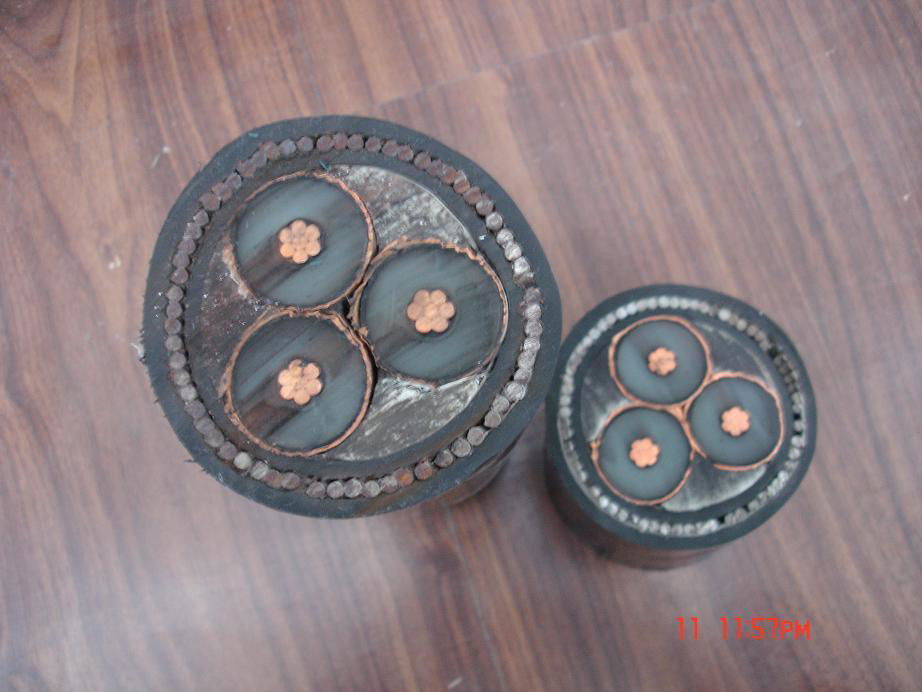You are using an out of date browser. It may not display this or other websites correctly.
You should upgrade or use an alternative browser.
You should upgrade or use an alternative browser.
Earth cable & SWA
- Thread starter Robdriver
- Start date
- Status
- Not open for further replies.
broadgage
Senior Member
- Location
- London, England
If you are running Steel Wire Armoured (SWA) cable between panels on a 400V 3 Phase system. The steel wire is connected to earth - correct? Why is a secondary seperate single core earth cable run as well? Thanks!
Several possible reasons
1) the steel wire armouring may not have a low enough resistance to satisfy the regs regarding disconnection times in the event of an earth fault.
2) A lower resistance than called for by the regs may be desired, perhaps to limit fault voltages.
3) As an extra safety feature, some electricians consider the steel wire armouring to be a less reliable earth connection than a copper wire. The wire armouring might corrode, or the cable might not be properly terminated, or the glands might work loose, especialy if exposed to vibration.
4) Because the client/consultant/engineer said so, perhaps to play it safe.
K8MHZ
Senior Member
- Occupation
- Electrician
Is SWA an NEC approved conductor? I have never heard of it until just now.
broadgage
Senior Member
- Location
- London, England
Is SWA an NEC approved conductor? I have never heard of it until just now.
Steel wire armoured cable is not normally used in the USA, I dont know if it is NEC approved or not, but it certainly is not normally used.
It is however in very widespread use in the UK, the location of the O/P.
Brittish and American practice differs, especialy as regards larger conductors.
In the USA, circuits for many hundreds of amps are normally wired in large single core cables in conduits.
In the UK it would be normal to use SWA for larger circuits, single cables in conduit are certainly permitted, and are often used for short interconnections within switchrooms etc, but not normally for longer runs.
Steel wire armoured cables are available from as small as 1.0mm (18AWG) up to at least 400mm.
The smallest sizes being used for lighting circuits, and the largest for heavy plant, and also for power company mains in the street.
These cables are suitable for direct burial, and are often used thus.
The normal voltage rating is 600 volts to ground and 1,000 volts between conductors, normally used on 230/400 volts systems.
The common practice in wireing a large building in the UK would be to use single cables in conduit for small circuits up to perhaps 32 amps, with armoured cables for larger loads and for feeders (known as sub-mains here)
SWA can be used for house wireing, but this is not the norm, "twin with earth" (similar to Romex) normally being used for houses and for low-end comercial work also.
- Location
- Massachusetts
By the description of SWA, it sounds a lot like AC-90 or MC cable without the green (earth/ground) wire.
No not at all like AC or MC.
Here are some examples




broadgage
Senior Member
- Location
- London, England
Of the pictures above, the first two are the type regularly used for premises wireing in the UK.
The next picture would appear to be two types of high voltage cable.
The last picture shows a 5 core cable, with one reduced size core, rather than the much more common 3 and 4 core cables.
This is not much used these days, but used to be common for power company mains in the street. The 4 full size cores being used for 3 phase and a neutral, with the fifth smaller core being used for street lighting.
This allowed central switching of all street lamps either by hand or by a single timeswitch at a substation.
The modern tendancy is to control each street lamp by its own photocell.
The next picture would appear to be two types of high voltage cable.
The last picture shows a 5 core cable, with one reduced size core, rather than the much more common 3 and 4 core cables.
This is not much used these days, but used to be common for power company mains in the street. The 4 full size cores being used for 3 phase and a neutral, with the fifth smaller core being used for street lighting.
This allowed central switching of all street lamps either by hand or by a single timeswitch at a substation.
The modern tendancy is to control each street lamp by its own photocell.
LarryFine
Master Electrician Electric Contractor Richmond VA
- Location
- Henrico County, VA
- Occupation
- Electrical Contractor
Ah, the steel-belted radial of electric cables.
dbuckley
Senior Member
- Location
- Canterbury, New Zealand
Ah, the steel-belted radial of electric cables.
It's good stuff.
I would guess the first time most American electricians see it is when they get posted to Iraq; theres many pictures on this forum from Iraq showing SWA.
- Status
- Not open for further replies.

